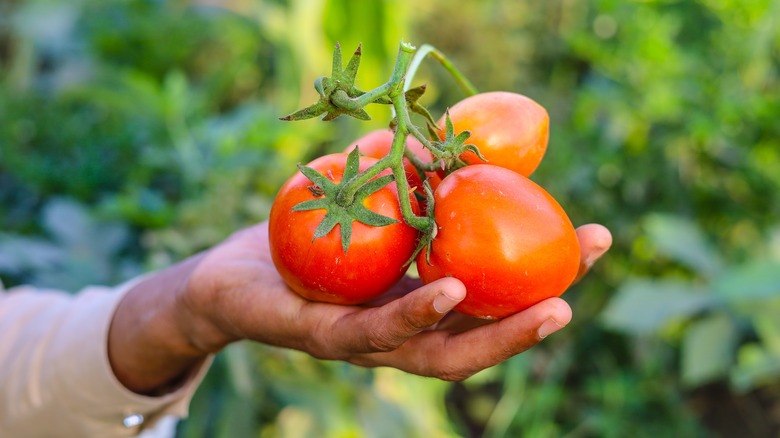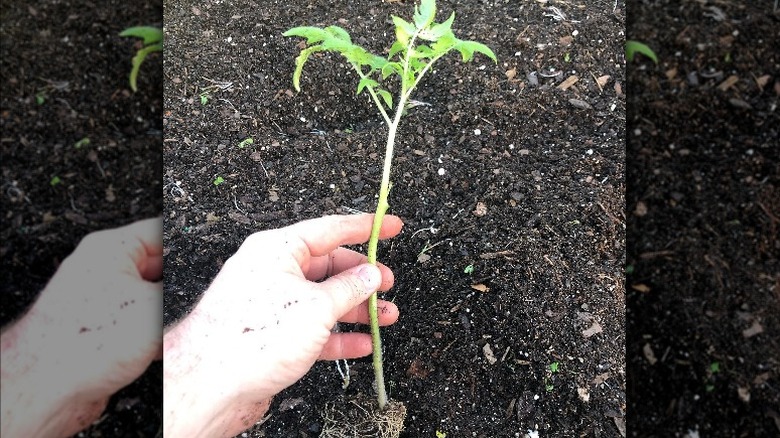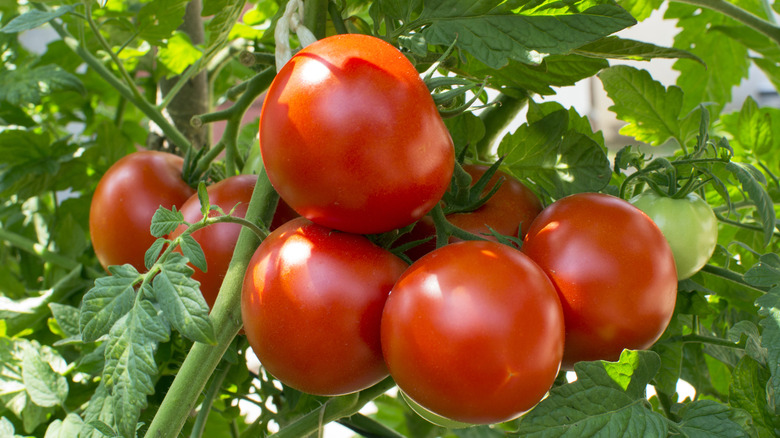Grow Better Tomatoes With The Simple Trenching Method
Most people think there's only one way to plant tomatoes: Dig a hole large enough for a root ball and place your seedling in the ground. Well, that's one way, but not the best way. The tomato trenching method allows you to dig a more shallow hole while allowing your plants to grow a larger, stronger root system more quickly.
Tomatoes are amazing. When any part of the stem of these plants is in contact with water or soil, nodes form on that section, eventually growing into roots. You can take a cutting of a tomato stem, place it in a glass of water, and within a few weeks, have a root system extensive enough to plant in soil. This makes tomatoes exceptionally easy to propagate. These same aspects make using the trenching method a simple way to grow big, healthy plants. Because every part of the buried stem will produce roots, your tomatoes will be more drought-tolerant and grow quicker because of the increased ability to take in nutrients from the soil.
How to trench your tomato plants
Although the trenching method can be used in any kind of soil, it is especially helpful in areas with extra rocky or dense clay conditions. It's also great for anyone who doesn't want to deal with digging a deep hole for larger seedlings. Instead of working harder to dig deeper, this method requires a trench wide enough and deep enough to cover all but the top two leaves with soil. For example, if you are placing young plants in the ground that are 12 inches tall and 4 inches wide, you can dig a trench that's about 10 inches wide and 5 inches deep. That will give you an extra 10 inches of root system compared to just planting the existing root ball.
Remove any leaves on the stem section that will be buried and dig your trench. Then, lay your plant in it sideways, covering all but the top few inches with soil. Gently tamp the soil down over your plant and water thoroughly. Keep the ground consistently moist for the first few weeks to help your tomato grow roots quickly.
Maintenance
You may not see much growth on the top part of your tomatoes for the first few weeks after planting, but rest assured, your plant is working hard underground to grow a hardy root system. Before long, if the soil is warm enough, you will see exponential growth as your plant uses all those new roots to absorb the nutrients in the soil. Be prepared to use the best support for the variety of tomatoes you are growing, which will help you get the largest possible harvest while preventing soil-borne diseases.
Since tomato plants are heavy feeders, fertilize them regularly throughout the season with a high-quality fertilizer according to the package instructions. Water deeply any time the soil is dry one inch below the surface, and keep the area mulched to prevent weeds and help discourage moisture evaporation. This is especially important when the hot days of summer arrive since mulching will save you time and money on your water bill.


